Food, without which we all die (obviously). Almost as important as water, the price of food is an important indicator in any economy – whether there is sufficient food for the people, whether the price of food is reasonable for the people, whether there is a reasonable range of food for the masses etc. Today, we will talk about food prices in China.
The flow of my writing is somewhat off because I am not that well. But the main points are there so just bear with it for this article.
Pig Refattening
Pork, banned by some religions as food but heavily favoured in other cultures such as the Chinese, is a cheap source of meat alongside chicken. In fact, Chinese eat so much pork that in certain cases, the price of pork is referenced when people are measuring China’s CPI. That is why today, we will give pork extra attention.
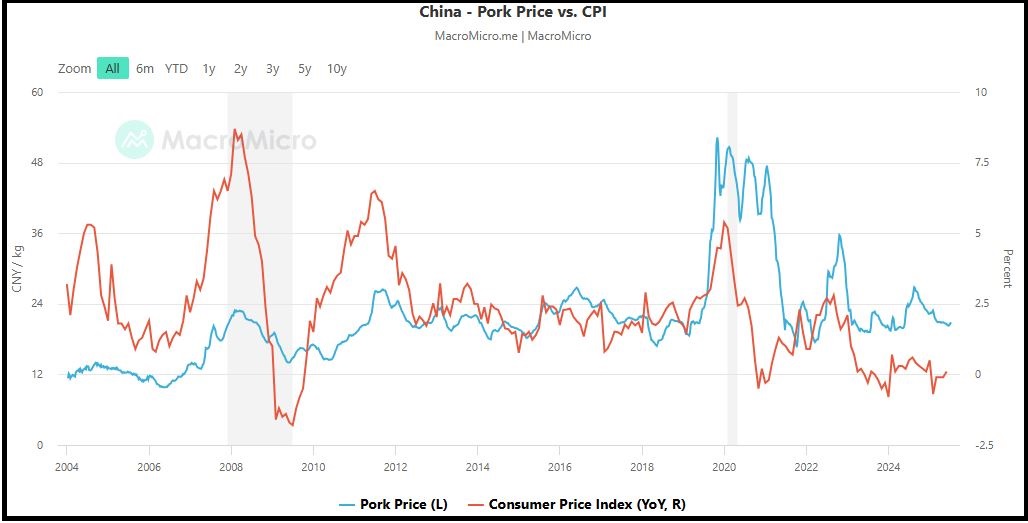
Around May or June 2025, the Chinese government has progressively banned the practice of pig refattening. In China, an adult pig weighs about 120kg before it is sent for slaughter. From breeding to slaughter, the process takes a minimum of 10 months. However, if one buys a piglet and fatten it, the process will be shorten to about 6 months as the average gestation period of a pig is 114 days. Pig refattening is a process where small time pig breeders buy adult pigs ready for slaughter from the big producers, then continue to fatten it using feed so that it can grow heavier by another 30 or 40kg. This process will only take 1 to 3 months and it is a far simpler and cheaper process compared to breeding and/or raising a piglet.
Such behaviour is also a gamble on pork futures by the pig breeders. If breeders determine that the prices of pork will rise in the next few months, then the pig now will be worth more a few months later. This refattening process will then help them earn a tidy profit. However, if they misread the market, such actions will cause losses. There are many reasons given by the experts on the ban for pig refattening, which includes potential for more diseases, lower pork quality, curbing oversupply etc. But the most important reason for all should be to curb oversupply and to push up the prices.
Below we see just how much the Chinese loves pork compared to other countries and other forms of protein.
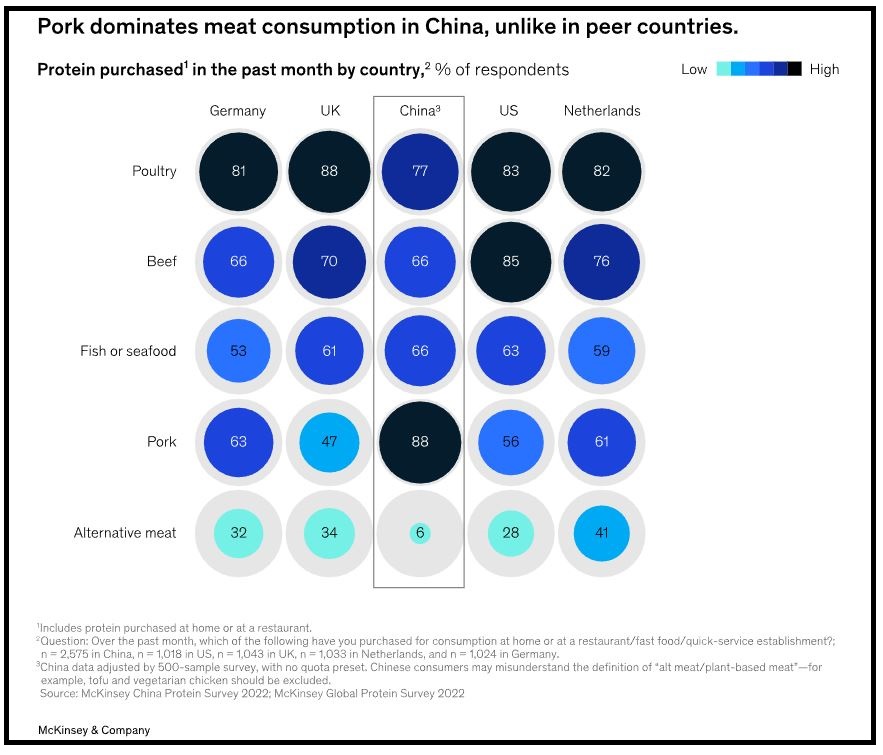
China has already given guidance that pigs sent to the slaughterhouse should be around 120kg, to reduce the country’s sow herd from about 40.38 million to about 39.5 million, an outright ban on refattening etc. All this points to one consequence – increase in pork prices meant to deal with deflationary pressures. As we can see, pork pricces has been fairly low for quite some time despite inflation. What the government wants is for pork prices to keep up with inflation so things are on a healthy balance.
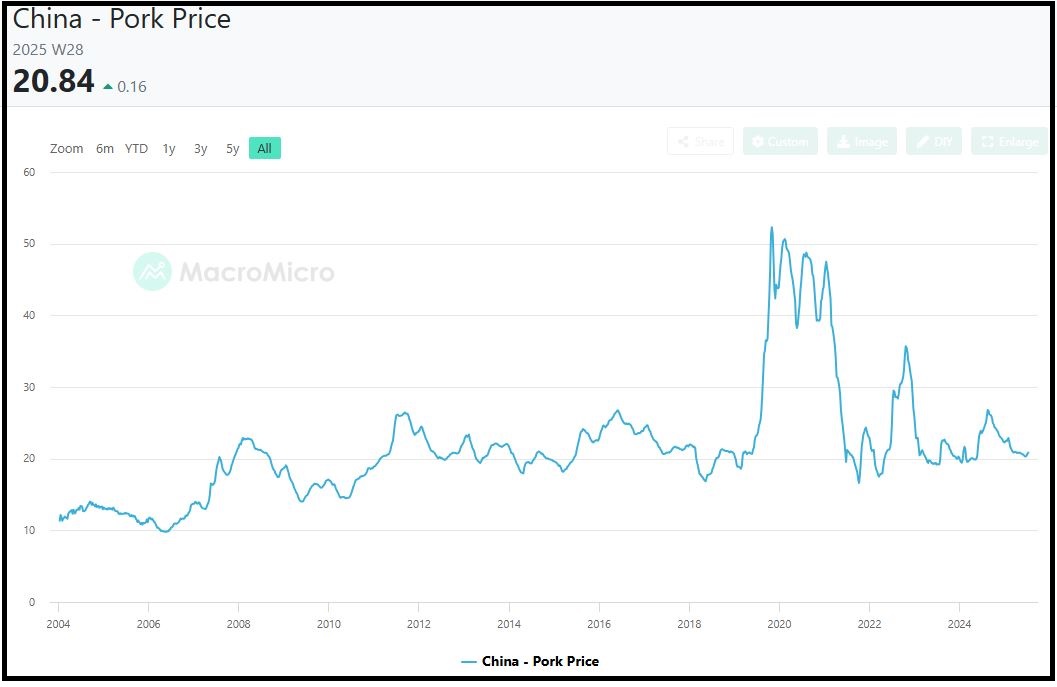
Food Prices
In fact, not only does China has an oversupply of pork, poultry production has also increased, resulting in overall prices dropping in the food supply sector.
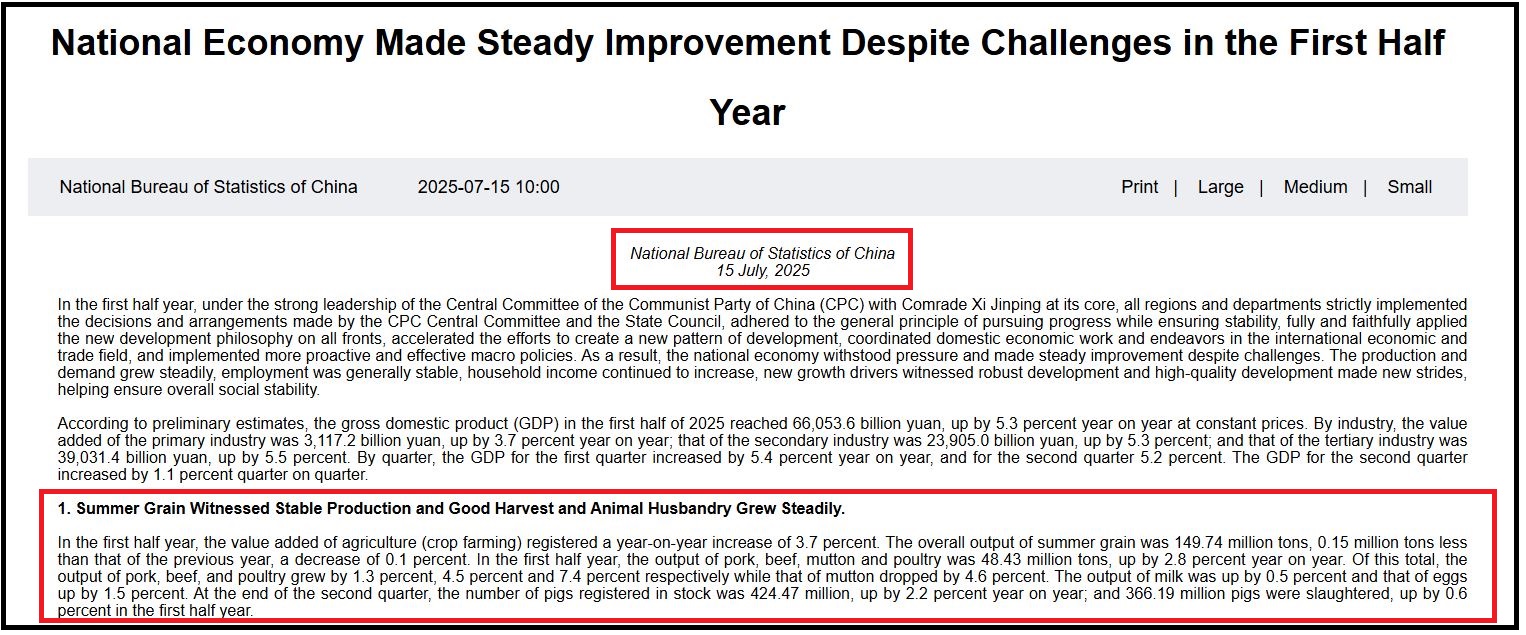
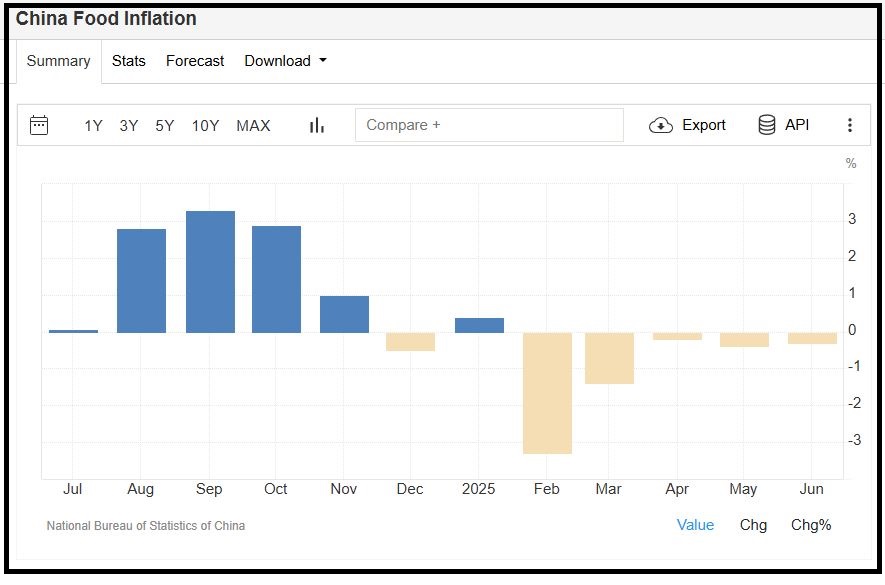
While people may think that food prices dropping is good for the people, it hurts the farmers real bad. Agriculture, the production of food, without which a country cannot attain food self-sufficiency. For a country like China which places importance in self-sufficiency in its critical and strategic resources, maintaining balance in its agriculture sector and ensuring that farmers have enough money to earn and to continue in the industry is important. Definitely it would spell trouble if farmers stop farming in favour for other jobs simply because there is the rewards are not worth the effort.
China has also been reducing its food imports and achieving 2 objectives: reducing reliance on other countries for food while ensuring that their own farmers will have money to earn.
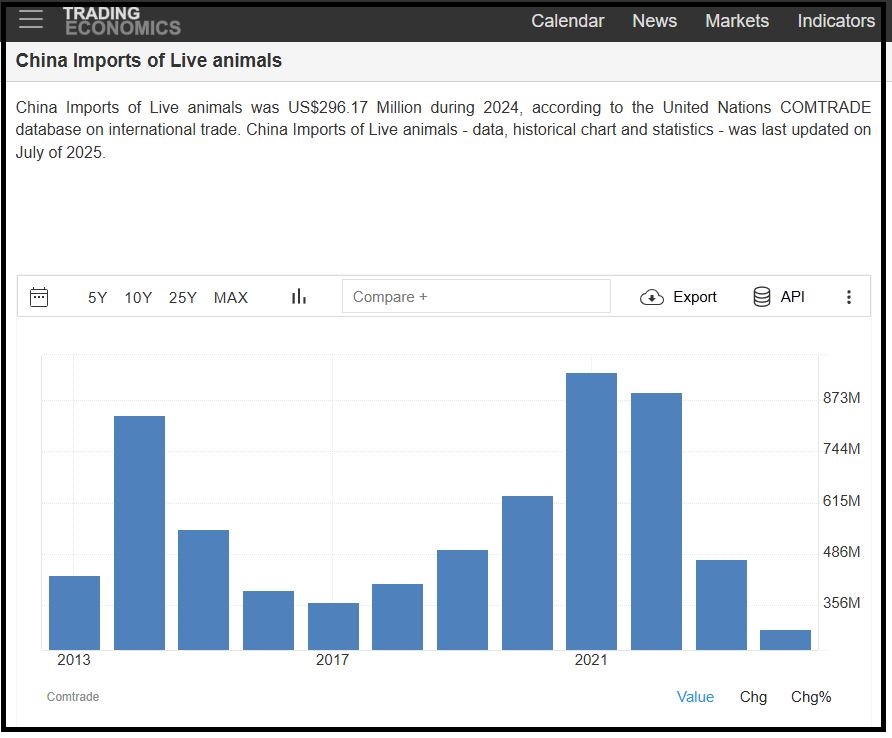
I do not have the graph for food (non-live animals) imports but my research has concluded that overall import of food and live animals have indeed reduced.
Conclusion
Farming companies should see a rise in their stock prices.
Disclaimer: This article is not financial advice. Readers are to do their own due diligence and form their own conclusion, before deciding how to invest in a manner best suits them.
Showing 1 - 3 out of 3
Page 1 out of 1
| - | Shop Products | Price | |
|---|---|---|---|
|
|
$99,999.00
|
||
|
|
$1.00
|
||
|
|
Price range: $69.00 through $99.00
|


